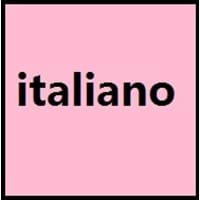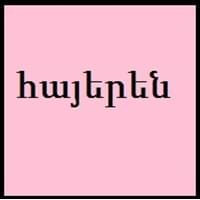Countries
Croatia, European Union, Italy, San Marino, Slovenia, Switzerland, Vatican City
Armenian Highland
National Language
Italy, San Marino, Switzerland, Vatican City
Armenia, Nagorno-Karabakh Republic
Second Language
Albania, Croatia, Malta, Slovenia
Not spoken in any of the countries
Speaking Continents
Europe
Asia, Europe
Minority Language
Crimea, Eritrea, France, Libya, Monaco, Montenegro, Romania, Somalia
Cyprus, Hungary, Iraq, Poland, Romania, Ukraine
Regulated By
Accademia della Crusca (Academy of the bran)
Armenian National Academy of Sciences
Interesting Facts
- One of the most romantic and melodic language in the history of the world is Italian.
- Italian Language is in the top three of the most widely spoken European languages in Europe.
- The first language into which Bible was translated is Armenian.
- Christianity was recognized as a national religion in 301 by Armenia Country.
Similar To
French and Portuguese Languages
Greek
Derived From
Latin
Not Available
Alphabets in
Italian-Alphabets.jpg#200
Armenian-Alphabets.jpg#200
Scripts
Latin
Armenian manuscript
Writing Direction
Left-To-Right, Horizontal
Left-To-Right, Horizontal
Thank You
grazie
Շնորհակալություն (Shnorhakalut’yun)
How Are You?
Come stai?
Ինչպես եք դուք? (Inch’pes yek’ duk’)
Good Night
buonanotte
Բարի գիշեր (Bari gisher)
Good Evening
buonasera
Բարի երեկո (Bari yereko)
Good Afternoon
buon pomeriggio
Բարի օր (Bari or)
Good Morning
buongiorno
Բարի լույս (Bari luys)
Please
Per Favore
Խնդրում եմ (Khndrum yem)
Sorry
scusate
կներեք (knerek’)
Bye
arrivederci
Ց'տեսություն
I Love You
Ti amo
Ես սիրում եմ քեզ (Yes sirum yem k’yez)
Excuse Me
Scusami
Ներեցեք ինձ (Nerets’yek’ indz)
Dialect 1
Romanesco
Eastern Armenian
Where They Speak
Lazio
Armenia, Armenian Highland, Georgia, Iran, Nagorno-Karabakh Republic, Turkey
How Many People Speak
Not Available
Dialect 2
Central Italian
Western Armenian
Where They Speak
Abruzzo, central Marche, Lazio, south Tuscany, Umbria
Armenian Highland, Cilicia, Lebanon, Syria, Turkey
How Many People Speak
Not Available
Dialect 3
Tuscan
Not Applicable
Where They Speak
Corsica, Gallura, Haute-Corse, Sardinia, Tuscany, Umbria
Not Applicable
Speaking Population
Not Available
Second Language Speakers
Not Available
Native Name
Italiano
Հայերէն (Hayeren)
Alternative Names
Italiano
Armjanski Yazyk, Ena, Ermeni Dili, Ermenice, Somkhuri
French Name
italien
arménien
German Name
Italienisch
Armenisch
Pronunciation
[itaˈljaːno]
[hɑjɛˈɾɛn]
Ethnicity
Italians
Armenians
Origin
960 BC
late 5th century
Language Family
Indo-European Family
Indo-European Family
Subgroup
Romance
Not Available
Branch
Not Available
Not Available
Early Forms
No early forms
Proto-Armenian, Classical Armenian, Middle Armenian, Armenian
Standard Forms
Italian
Eastern Armenian, Western Armenian
Language Position
Not Available
Signed Forms
italiano segnato "Signed Italian" & italiano segnato esatto "Signed Exact Italian"
Not Available
Scope
Individual
Individual
ISO 639 6
itas
Not Available
Glottocode
ital1282
arme1241
Linguasphere
51-AAA-q
57-AAA-a
Language Type
Living
Not Available
Language Linguistic Typology
Subject-Verb-Object
Subject-Object-Verb
Language Morphological Typology
Fusional, Synthetic
Agglutinative, Synthetic
Italian and Armenian Speaking population
Italian and Armenian speaking population is one of the factors based on which Italian and Armenian languages can be compared. The total count of Italian and Armenian Speaking population in percentage is also given. The percentage of people speaking Italian language is 0.90 % whereas the percentage of people speaking Armenian language is Not Available. When we compare the speaking population of any two languages we get to know which of two languages is more popular. Find more details about how many people speak Italian and Armenian on Italian vs Armenian where you will get native speakers, speaking population in percentage and native names.
Italian and Armenian Language Codes
Italian and Armenian language codes are used in those applications where using language names are tedious. Italian and Armenian Language Codes include all the international language codes, glottocodes and linguasphere.





